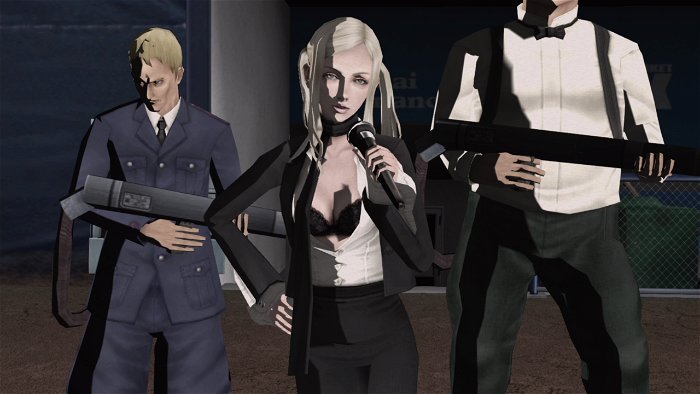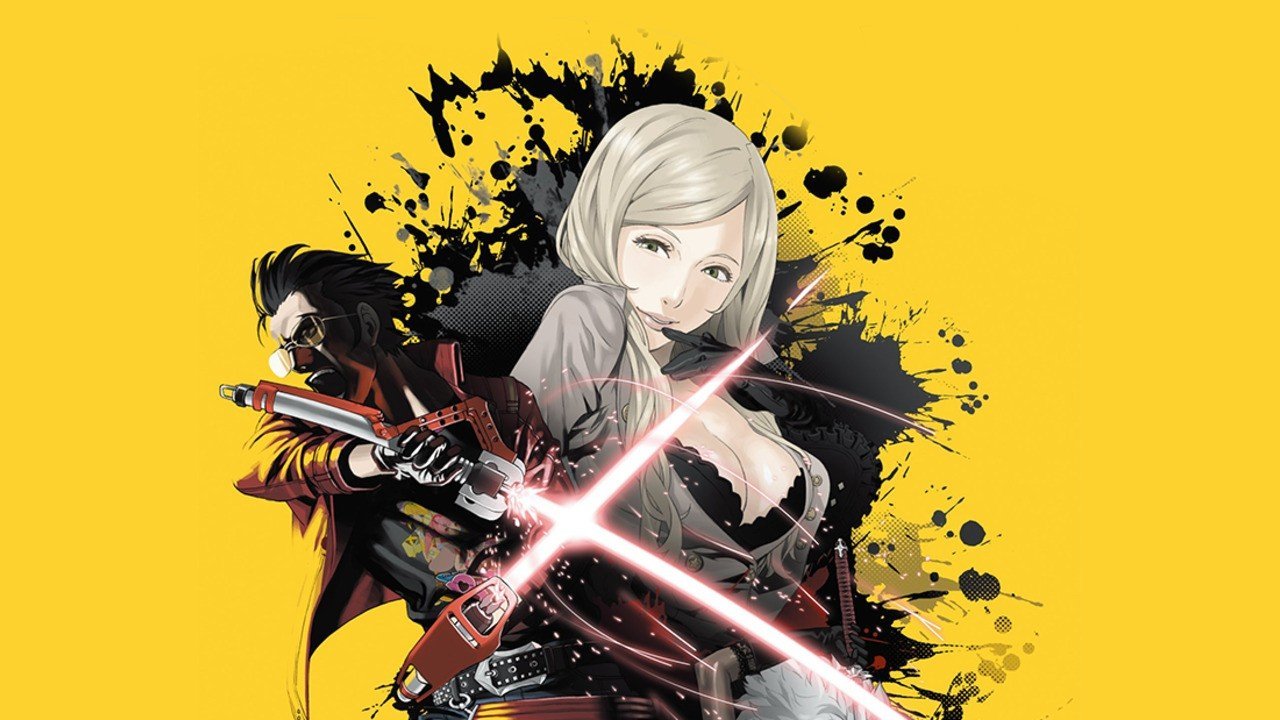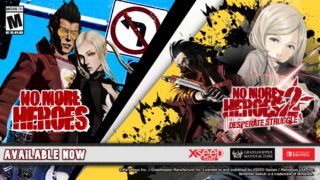No More Heroes 1 & No More Heroes 2: Desperate Struggle offered stylish, bloody battles against clever, unique bosses during their initial releases on the Wii, and are now making welcome returns on the Switch in advance of the series’ third title. They make for a solid way of getting up to speed on the story of Travis Touchdown’s various ascensions through the top-ranked killers of the United Assassins Association (UAA), although not without some clunky elements and unpleasantness that drag the titles down.
Travis and his beam saber aim to cleave their way through the ranks of wild, bizarre, and hilarious assassins that make up the top ranked killers in the world of Santa Destroy. That weapon, which feels kind of like a bootleg (yet functional) lightsaber, offers a handful of strikes that should keep your opponents reeling when used properly. Just be sure to keep an eye on its charge meter, as the thing runs on notoriously-weak batteries, and you’ll need to waggle it to keep it powered up.

Waggling was an important part of both No More Heroes games when they first released, making use of some straightforward hand gestures for charging the saber and doing executions. These can be done with the Switch’s JoyCons, capturing the feel of the original releases, but you can also play with them docked, using the right control stick for most of these gestures. This play mode is functional, but having to take your fingers away from the attack buttons to do these gestures feels a bit uncomfortable for a while. It’s something I got used to, but I still prefer the simpler gestures.
Charging the saber is the worst among them, though. Charging the sword with a JoyCon is quick and relatively easy to do in combat, but doing it with the docked controller makes it work slowly. It’s just not practical to flick the stick that quickly while your right hand is being used to support the console’s weight. It requires a lot of dexterity to do quickly, is quite uncomfortable, and given that you tend to be charging the saber in live combat, you take a lot of unnecessary hits. Oneechanbara Origin’s bloodstained sword managed a similar effect (forcing you to “restore” your weapon during combat, forcing players to juggle offense and repairs), but with far more grace, making No More Heroes’ beam saber charging look even more annoying. Assigning it to an attack button you could mash would be far easier to endure.

This can get especially aggravating when combat gets heated against several opponents, and you’re almost always fighting a bunch at once. This can make the game’s bloody combat into quite the stylish spectacle as you cut off heads and cleave folks in two, blood and cash spewing into the air with every kill, but when you’re trying to charge your saber and the enemies give you little room to do it, it got on my nerves (while in handheld mode). It’s less of a problem with the system docked, allowing you to enjoy cutting down swaths of enemies.
That said, both No More Heroes games are honestly a bit boring when you’re facing off against regular foes. Basic enemies have little variety in how they act, with a few shifts in weapons (but almost no change in how they fight), and all of the battles feel like they’re fought in dull, lifeless hallways. Desperate Struggle fixes this a little bit, but I still found that basic enemy fights felt like filler to slow you down on the way to the bosses.
Boss battles are where both games shine, offering some truly outlandish fights against comical, bizarre, and ruthless assassins. Each battle has some sort of unique gimmick that makes it feel special, as well as some great character designs and combat visuals to make them really stand out. This seems to be where most of the best work is on both games (Desperate Struggle especially) and will easily be the highlights of anyone’s playthroughs.

The music is the next best part of the No More Heroes games. The sequel is the standout yet again, but both games have fantastic, rocking soundtracks filled with many memorable tunes. Unsurprisingly, the boss tracks are the standouts here as well, making for some fantastic listening as you try to figure out how to stay alive against these dangerous folks.
However, I’m not 100% sure I want to win against the bosses when I play the games. That’s a strange thing to say, but that’s because I absolutely cannot stand the protagonist, Travis Touchdown. He’s a massive jerk, irritatingly cocky, and is a greasy, leering sleazebag to Sylvia (although the game is also a leering sleazebag to her, with entire shots embarrassingly focusing on her cleavage and up her skirt at points), the rep from the UAA, in almost every scene he shares with her. He’s offputting in almost every way a character can be, and I honestly root for his destruction any time he opens his mouth. The voice actor plays him well, but he is a grating character without any charm.
Equally grating is the first game’s open world and minigames. Having to do random weird jobs around Santa Destroy to make funds for assassinations bogs the first game down, as the town is empty and the jobs are downright dull. Desperate Struggle improves on this by getting rid of the open world and making the jobs into 8-bit minigames that aren’t as necessary, and are at least fun.

It may seem odd to review the No More Heroes games as a package, but with both releasing on the same day, it’s hard not to pit them against one another, especially when Desperate Struggle is basically superior in every single way. There’s not much reason to get the first one unless you’re absolutely invested in experiencing the story in full, as the sequel just demolishes it in terms of quality.
Even so, the pair make for flawed action games that are really only at their best during boss battles, with the rest of No More Heroes feeling light or dull. They’re stylish with their over-the-top action, but it doesn’t do enough to make up for the fact that you really just want to be fighting bosses and not mobs of faceless nobodies in empty hallways. Adding its incredibly-unlikeable protagonist into the mix makes it worse, and while the games make for light action fun, they feel like they could be so much more if they only focused on what they did best.




